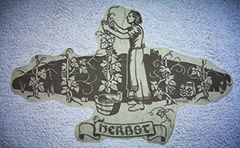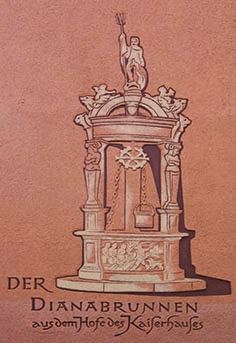Hochschularbeit
| Lea Luisa Puglisi: | Sgraffito decoration of the 1950s in Hildesheim (pre-war and afterwar period) | Zurück |
| Sprache: | Original - Übersetzung | |
| Seitenübersicht: |
|
|
 |
|
 |
|
| Zusammenfassung: | Abstract The city of Hildesheim was heavily damaged on March 22, 1945 through a bomb attack by the British-Canadian Air Force. After the destruction over 40% of all dwellings were destroyed or uninhabitable within the city. Hildesheim was then one of the most affected by the war destruction cities in Lower Saxony. Before the devastating destruction, Hildesheim was considered the „Nuremberg of the North“, a medieval town that had grown over the centuries and their half-timbered buildings were rich in architectural and decorative details. After the devastation, many people were left homeless and without shelter. The reconstruction was done immediately and nevertheless the people managed quickly new housing. Nearly nine months after the end of the war one million tons of debris had been cleared from the streets. The houses, which originated then, were quick to provide housing due to time pressure and due to lack of materials that weren’t as richly decorated as the former half-timbered houses. The architecture of the fifties was modern and functional and testified optimism. Despite the economical use of materials continues to be great emphasis was placed on the visibility of buildings. The time typical characteristic was the art in architecture. They ranged from mosaics over reliefs to artfully executed plastering. These were primarily used to document the determination of a building, but it existed also representational motifs, which had nothing to do with the actual use of the building. In Hildesheim, many of these artistic plasters have been preserved, but some doesn’t exist anymore. Many of the motifs show modern but also traditionalist representations that are closely linked to the history of Hildesheim. At this time there was painter and firms who devoted themselves to this task and who left their personal stamp on the facades of the city. The following work is dedicated to the plaster techniques of that time. It contains an overview of the date of preparation of work still existing facades in Hildesheim, which are adorned with these ornaments. In addition, it deals with selected motifs with individual objects that have been subjected to a more detailed analysis. |
| Schlagworte: | Sgraffito-technique, sgraffiti, lime plaster, plasterings, Hildesheim, fifties, reconstruction, architecture, Otto Aue, Alfred Dorn, Bugenhagenstreet |
 |
|
 |
|
| weitere Angaben: |
|
| Zurück | |
Das Hornemann Institut verfügt ausschließlich über die hier angezeigten Informationen. Für weitere Informationen oder Kopien der Hochschularbeit wenden Sie sich bitte an den Autor/die Autorin - oder wenn kein Kontakt angegeben ist - an die Sekretariate der jeweiligen Fakultäten.